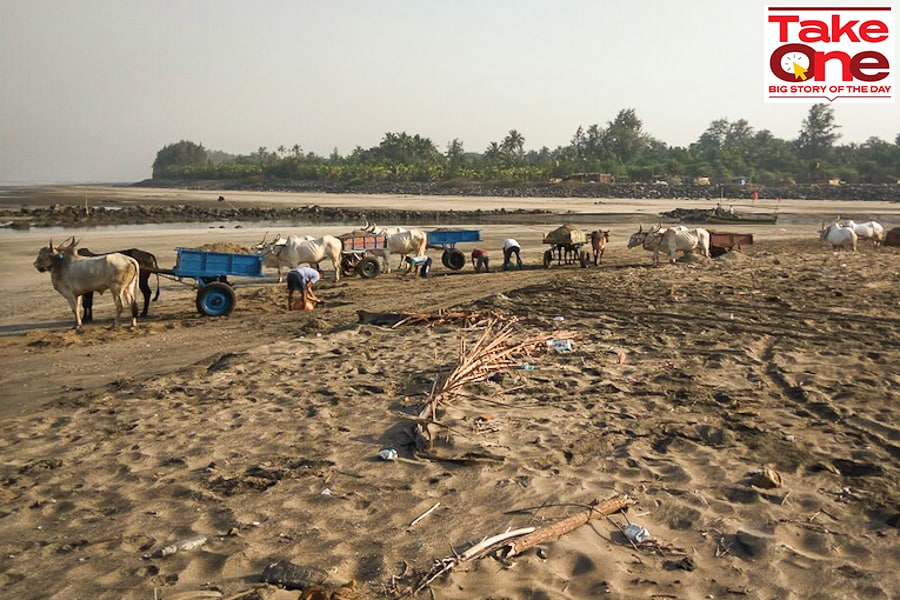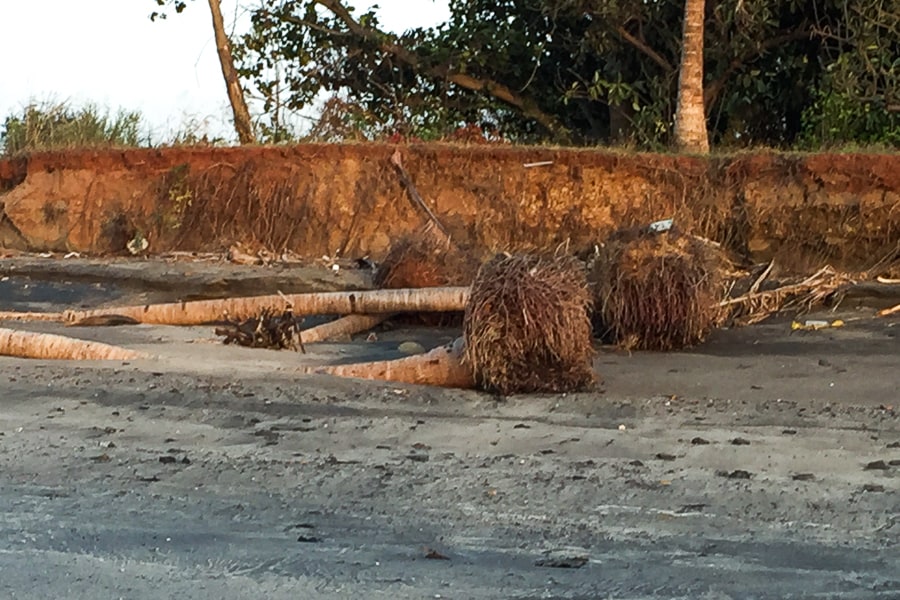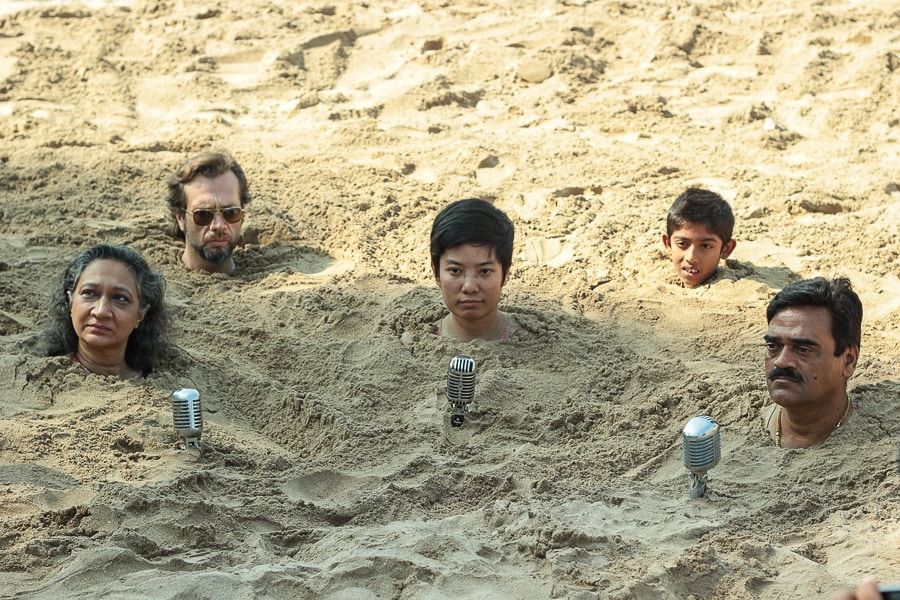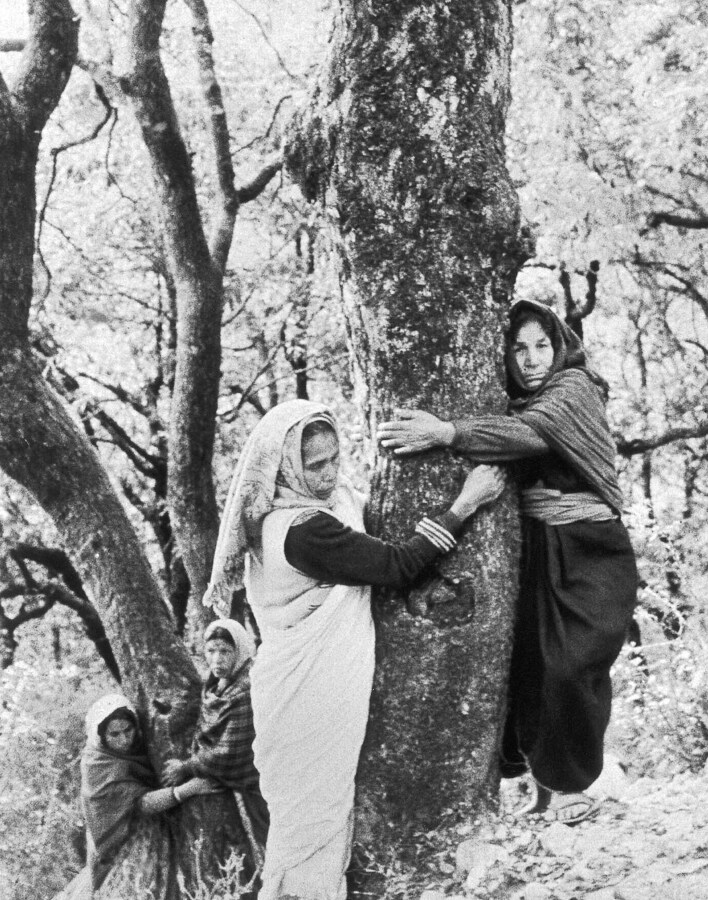
Women and the woes of sand mining
Women of coastal communities are disproportionately affected by illegal sand mining as they face an increased burden of household responsibilities
Image: Sumaira Abdulali Every day, lines of bullock carts with specially rubberised wheels cross the creek between Kihim and Awas beaches in Alibag, where many Mumbaikars now live and work, to mine vast quantities of sand unchecked.
Every day, lines of bullock carts with specially rubberised wheels cross the creek between Kihim and Awas beaches in Alibag, where many Mumbaikars now live and work, to mine vast quantities of sand unchecked.
In 1973, almost 20 years before the Coastal Regulation Zone was first notified in 1992 and 30 years before I encountered the sand mafia on Kihim Beach, in Maharashtra, in 2004, it was impossible for Gaura Devi and the women of Raini, Uttarakhand, to imagine that sand mining would wash away their village in the Garhwal Himalayas. Even less likely that their Chipko Movement to save trees would inspire a movement to save sand on the Konkan coast of Maharashtra. Yet, when I felt the weight of sand press down on me, buried in the sand to protest its destruction in an awareness campaign ‘Don’t Bury the Issue of Sand Mining’ I drew inspiration from Gaura Devi and other women of Reini.
In 1973, Gaura Devi hugged her trees because she loved them. She hugged them because their lives were intimately connected, she wanted to save them from logging. Above, holy Badrinath, Kedarnath and the Valley of Flowers are in the tallest mountain range of the world. Underfoot, ancient sand scattered with shells from the ancient seabed of the Neotethys Ocean, which arose to form the Himalayas in the clash of two continents—India and Eurasia—50 million years ago.
As the women of Raini, who may never see or imagine a sea-coast, are intimately connected with seashells, we who live by the sea are intimately connected with Himalayan glaciers that flow to the coasts, grinding rocks along the way, bringing water and sand with them. “Different forms of environmental change are intertwined,” says ‘Making Peace with Nature’ the United Nations’ blueprint on the Climate Emergency, released in 2021. “Earth’s environmental emergencies must be addressed together to achieve sustainability.”











